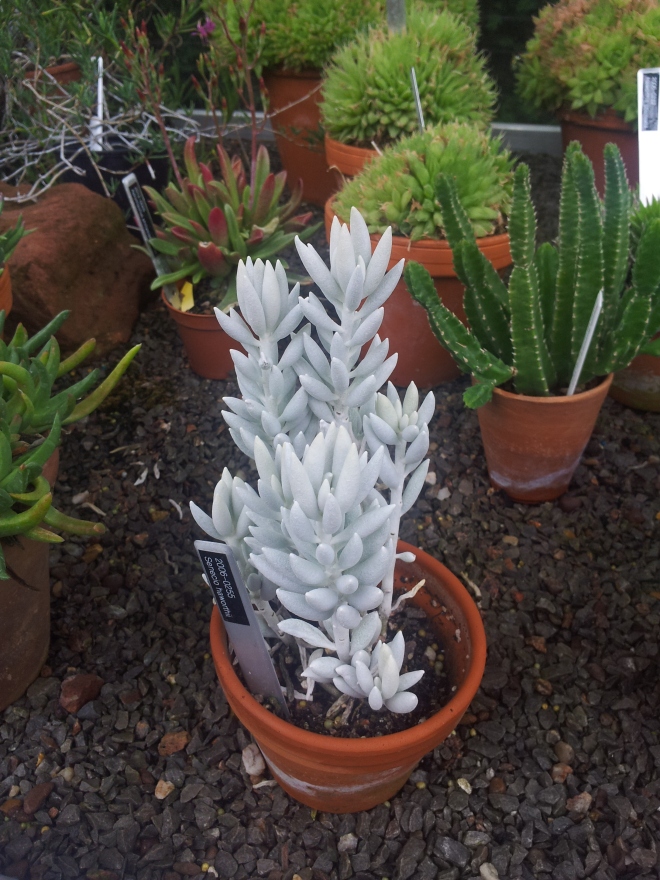In the last blog, I looked at the diversity in plant colours and why some plants aren’t green. But why are most of the plants green in the first place?
As I have said before, the green colour comes from the pigment inside the plant called chlorophyll. This chlorophyll absorbs light which it uses in photosynthesis, allowing the plant to grow. Light is a spectrum of colours as you can see in the diagram below. The reason we see green plants as green is because the chlorophyll only absorbs red and blue light and cannot absorb green light. This green light is then reflected back into our eyes.
The visible light spectrum. Green chlorophyll absorbs in the violet and red regions, reflecting the green light into our eyes
For the plant, the more light absorbed the better. That means the more different colours of light absorbed, the more energy for photosynthesis. So it may seem strange that plants only use a small proportion of available light. Black things absorb the most light as there is no light reflected back from them so surely plants would be more efficient if they were black. It is also strange because most of the sun’s light is in the green part of the spectrum….why have plants evolved not to use most of the light that is available?
This is still a source of discussion.
Green because there was already purple
One theory put forward by microbial geneticist Shil DasSarma from the University of Maryland is that there was another light-sensitive pigment already being used by microbes before organisms with chlorophyll came along. This pigment, retinal, absorbs in the green part of the spectrum, reflecting blue and red light, therefore appearing purple. It is thought that bacteria with these pigments were very abundant and that organisms with chlorophyll could not compete with them in the fight for green light. They therefore evolved to use the other bits of light available using chlorophyll. This process was more efficient and eventually the purple organisms were out-competed by the green ones, evolving into the diversity we see today.
Other scientists think that because the first plants evolved from organisms found in the deep sea where only red light can get to, they didn’t need any way to process green light because it just wasn’t there. In this scenario, when the first plants began to grow on land 50 million years ago, the fact that they only used some of the light didn’t stop them growing. This meant that they stayed green and evolved into the millions of green species we see today. And although black would be the most efficient colour of plant, there may have been disadvantages to the colour if it ever did arise or green might have been just good enough in the first place!
This uncertainty is explained in these great videos from MinuteEarth:
Increasing the efficiency of photosynthesis is a hot topic of research at the moment as we are constantly looking to develop more sustainable ways of growing more food for the world’s booming population. One way scientists thought they could increase the amount of light being absorbed is by making plants with more than one type of pigment in the same leaf. So in each leaf there would be two different types of chlorophyll absorbing two different parts of the light spectrum, maximising the amount of light absorbed.
Another suggestion is layering different plants with different pigments in the same area. So between all the layers of different plants, all the available light is absorbed and used for photosynthesis. This would mean bigger plants and more food.
So green may not be the most efficient colour for plants to be, but it’s the only one they have…or is it?!


